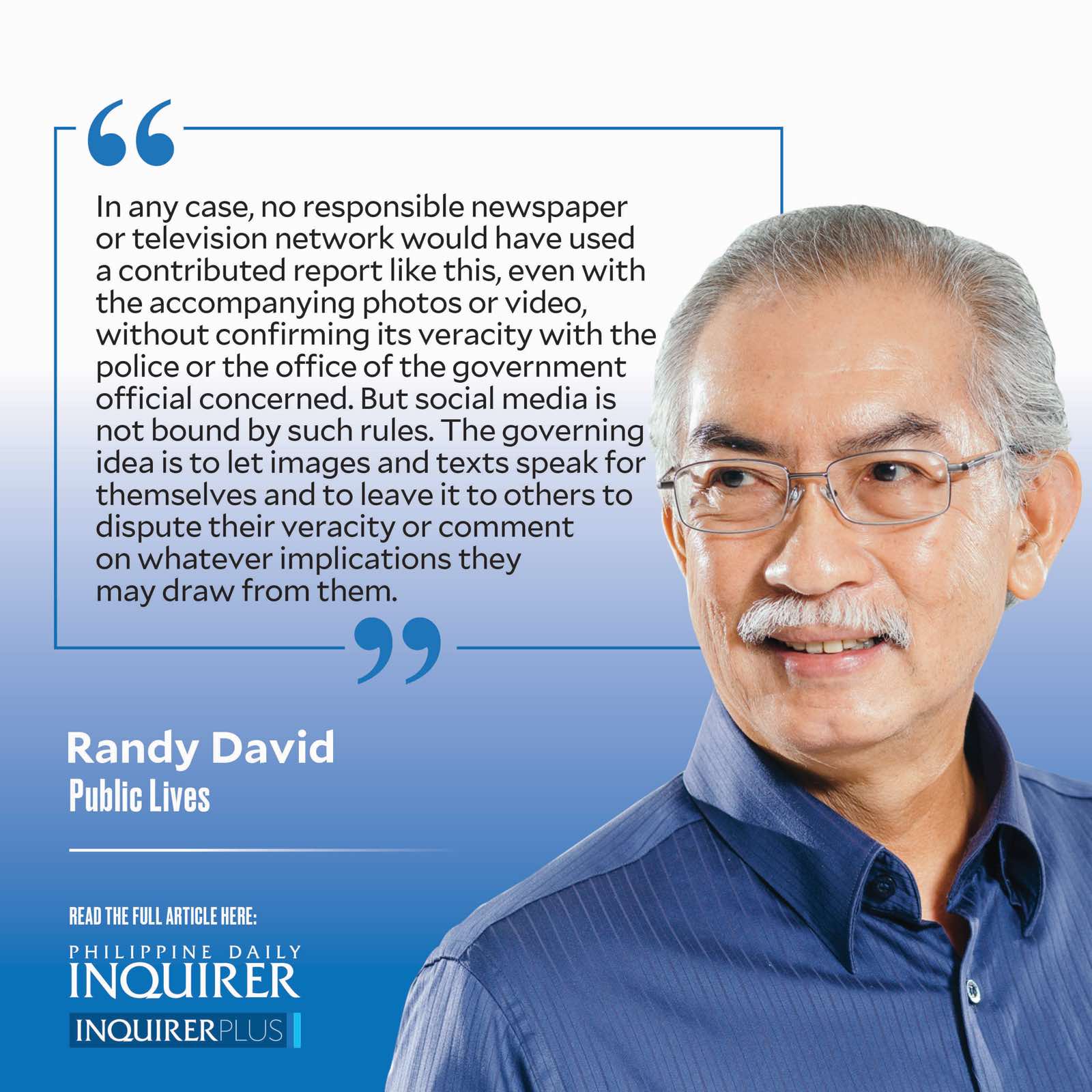Truth in the age of social media
Last Thursday, Oct. 5, a short video clip posted on X, formerly Twitter, went viral. The video shows a police officer stopping traffic along busy Commonwealth Avenue in Quezon City, purportedly to let a VIP convoy freely cross the wide avenue. Within a short span of time, the video had been reposted and uploaded on other social media platforms, eliciting a torrent of angry and expletive-laden commentary about the sense of entitlement of a particular high-ranking government official.
The following day, Oct. 6, the Office of the Vice President (OVP) issued a long official statement denying that the VIP in question was incumbent Vice President Sara Duterte. The statement, posted on the OVP’s Facebook page, said it was impossible for VP Sara to have been in Commonwealth Avenue on that day, as claimed in the video, because she was at that time in Mindanao to address a World Teacher’s Day celebration. It went on to say that “the Vice President will always put the interest and welfare of the public over her own personal interest and privileges.”
Article continues after this advertisementThe Quezon City Police Department (QCPD) came out with its own statement apologizing for the mistake and announcing that it had relieved the police officer involved, who also apologized for his mistake. After viewing the video a few times, I thought that Sgt. Pantallano might have misheard the word VIP and, in his confusion, confirmed that it referred to the VP. It was an honest error that shouldn’t have caused the political furor it unleashed.
It is a perfect example of a piece of misinformation (rather than motivated disinformation) that acquired a life of its own in a highly charged political atmosphere, accumulating unwarranted meanings, and confirming the worst biases. From a media studies perspective, this incident validates a disturbing truism that has long kept traditional mass media on its toes but has largely been ignored in social media—namely, that what often makes information worthy of dissemination is not because it is true but because it is interesting, relevant, or shocking. This is why, in the modern world, one learns to turn to science, not to the mass media, to know what is true.
Mainstream news organizations like newspapers and television networks have long been wary of the underlying seductions of “newsworthiness.” It is the reason why editorial boards are actively brought into the day-to-day work of newsrooms—to weed out the speculative, the misleading, and the patently false. This is not always easy to do. By the nature of their product, news organizations work on very tight deadlines. Information quickly becomes stale. There is not always enough time to adequately fact-check, aim for fairness, or completely rule out untruth.
Article continues after this advertisementNot so with social media, where newsworthiness has been replaced by its shady cousin, virality. In an information world where virtually everyone with a mobile device and access to the internet feels qualified to function as a reporter and/or opinion writer, there is no room for professional gatekeepers. Much less is there any compelling reason to get the other side of an issue or deconstruct an image that purports to be an objective representation of an event.
In the video, Pantallano of the QCPD assures the man who was taking the video that the traffic interruption won’t take long. “May tatawid lang pong VIP,” (We’ll just allow a VIP to cross). “Sino pong VIP?” (Who is the VIP?) the man behind the camera asks. “Uhm, si VP po yata,” the policeman mumbles. “Si VP Sara? Siya ang tatawid? (You mean VP Sara? She’s the one who will be passing?) “Yes,” Pantallano replies, sounding rattled. He then tries to reassure everyone that the traffic disruption was going to be very quick.
The video man continued to record the event and, turning to the phalanx of impatient motorists that had gathered in front, he sarcastically admonished them to be patient until VP Sara could freely cross the busy highway. At that point, a roar of laughter and jeers rose from the momentarily cleared intersection of Commonwealth Avenue. I chanced upon this viral video clip in two Viber groups. It carried a one-line comment: “Sinara ang Commonwealth kasi tatawid si VP Sara … Tangna!” (They closed Commonwealth because VP Sara was going to pass … [expletive]!)”
Too bad for the VP, it was easy to believe the video because the incident was emblematic of the sense of entitlement with which she seemed to regard confidential and intelligence funds in her recent public appearances. In any case, no responsible newspaper or television network would have used a contributed report like this, even with the accompanying photos or video, without confirming its veracity with the police or the office of the government official concerned. But social media is not bound by such rules. The governing idea is to let images and texts speak for themselves and to leave it to others to dispute their veracity or comment on whatever implications they may draw from them.
Still, I am not certain that this attitude is necessarily good for democracy. While it appears to encourage a critical view of mass communication, it could also breed a fatal indifference to the need for truthful information in public affairs.
—————-
public.lives@gmail.com

















